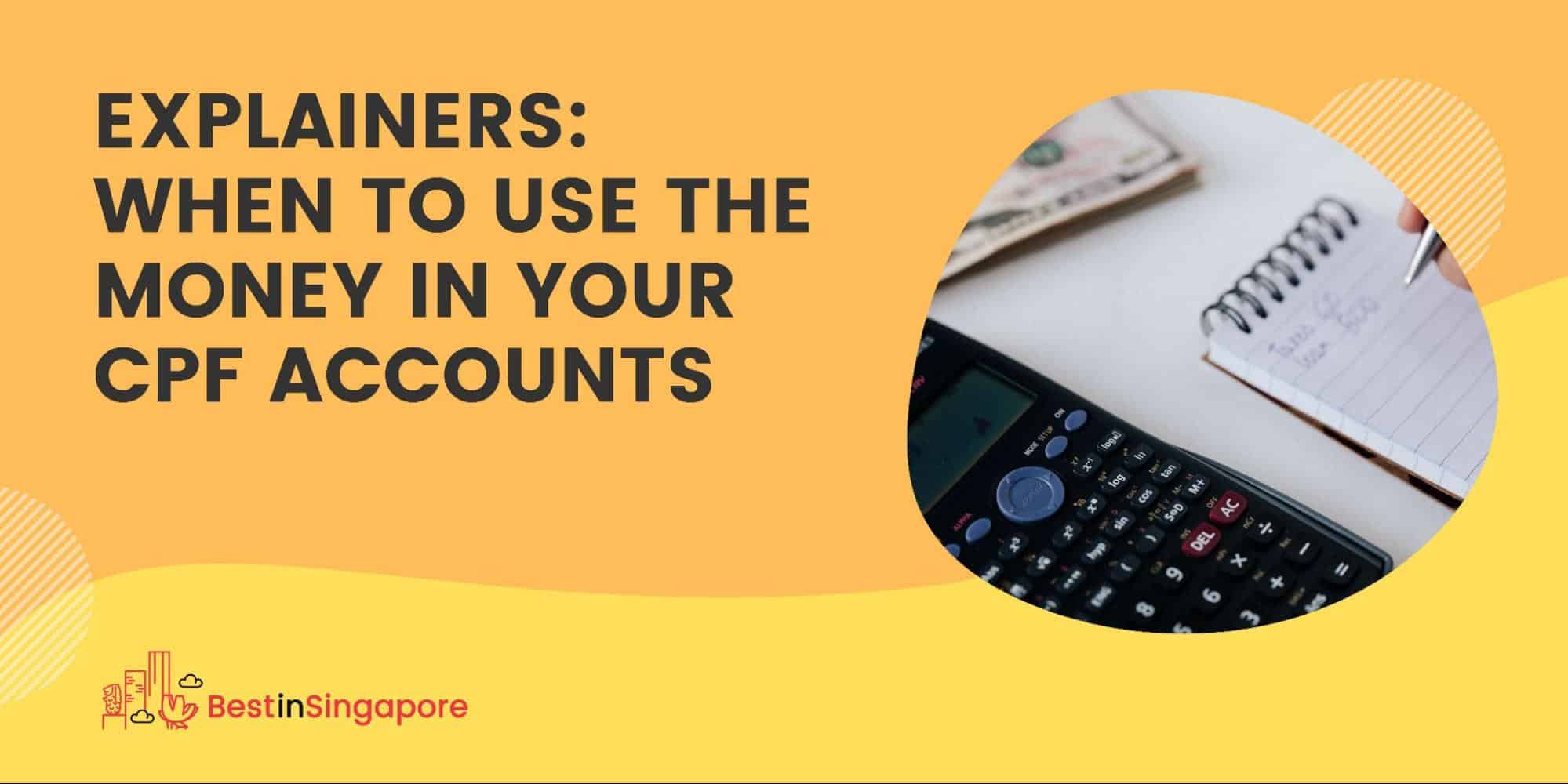Explainers: When to Use the Money in Your CPF Accounts
Your Central Provident Fund (CPF) accounts exist for one good reason—to help you save some cash for a rainy day. Unfortunately, you can’t really withdraw cash from your CPF accounts until you turn 55 years old.
However, it doesn’t mean that you can’t use your hard-earned money for other purposes. We created this quick guide to help you understand how and when to use the cash you’ve stacked up in your CPF accounts.
Ordinary Account
A brief refresher: your Ordinary Account (OA) is just one of the accounts that make up your CPF account. The money earned in this account can be used for housing, insurance (such as the Dependants’ Protection Scheme), investment, and education.
Money saved in this account is normally reserved for retirement. By the time you turn 55 years old, a Retirement Account (RA) will automatically be created for you.
The amount earned in your OA and Special Account (more on that later) will be transferred to your RA, which can be withdrawn for immediate expenses. Note that you can only withdraw up to $5,000.
Until then, many young Singaporeans use their OA to purchase a home. For instance, you can use your OA to pay for a brand new or resale HDB flat. You can also use this to pay for the downpayment when applying for an HDB loan.
In terms of education, you can technically withdraw up to 40% of your accumulated OA savings to pay for your own tuition, as well as your spouse’s or child’s.
Note that this only applies to some cases. For example, you’d have to take a full-time, subsidised, undergraduate course at a select number of universities to use your OA.
You can also make an investment in a variety of financial products under the CPF Investment Scheme (CPFIS). This includes insurance products, unit trusts, fixed deposits, bonds, and shares.
To be eligible to make investments under CPFIS, you must be at least 18 years old and have more than $20,000 in your OA. You can invest up to 35% of the amount earned in your OA in stocks, property bonds, and corporate bonds, and 10% of your investible funds in gold.
Any amount earned in your OA would also earn interest, which will be credited to your account on the first day of January each year. As of January 2022, the rate is at 2.5%.
Special Account
Unlike other accounts, your Special Account (SA) doesn’t exactly make immediate contributions to housing, healthcare, or education. More often than not, the amount earned in this account is mostly reserved for your RA.
Apart from that, the only time you can use your SA is to invest in CPF-approved financial products under the CPFIS, just like your OA.
To do that, you must first have a minimum accumulated amount of $40,000 in your SA. You can use part of the amount to invest in Singapore Government Bonds, annuities, unit trusts, treasury bills, and investment-linked insurance products, among others.
Compared to your OA, the list of financial products you can invest using your SA is rather limited. You can check out CPF’s website for more information.
But if you’d rather leave your SA untouched, then you’ll benefit from higher interest rates, which are computed monthly and credited to your account annually. As of January 2022, the rate is at 4%.
Medisave Account
Generally, your Medisave Account (MA) is used to pay for healthcare, dental care, and other medical expenses. Contrary to popular belief, your MA is a versatile account that can be used beyond paying for hospitalisation bills and major medical procedures.
This includes paying for repeated treatments (in-patient or out-patient), screening tests, rehabilitation, surgeries and hospitalisation, and palliative care. Expectant mothers can also utilise their Medisave fund to pay for pre-delivery and delivery medical expenses.
Keep in mind that you can use your MA to pay for personal or your immediate family member’s medical expenses. Moreover, public and private hospitals or clinics accept Medisave.
Take note that you can’t technically withdraw your funds from your MA. Instead, the amount will be paid directly to your chosen Medisave-approved medical provider, which is subject to withdrawal limits you can read more on MOH’s website.
This rule doesn’t apply to patients who are under the Medisave Care scheme, which allows those aged 30 and above who are severely disabled to make monthly cash withdrawals.
Depending on how much one has on their MA, they can withdraw up to $200 monthly from their own and/or their spouse’s MA for their long-term care needs.
Even if you’ve reached 55 years of age, you’re not allowed to make cash withdrawals from your MA unless you’re exempted (see Medisave Care scheme above). Despite this, the amount saved in your MA will earn interest. As of January 2022, the rate is 4%.
Another thing worth mentioning is that you can use your MA to pay for MediShield Life—a mandatory medical insurance that you can use alongside Medisave to cover medical bills.


